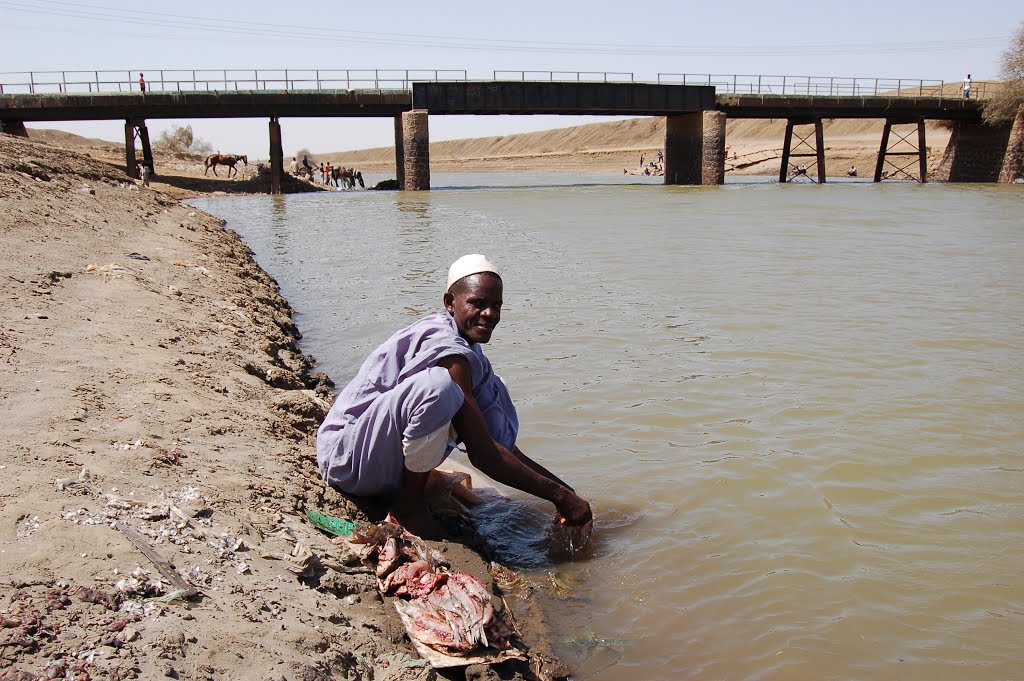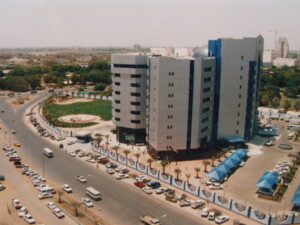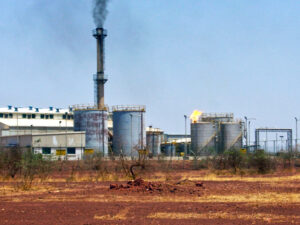Nile in mortal danger, Sudan’s food security at stake
“Climate change, pollution, and exploitation by man are putting existential pressure on the world’s second longest river,” the Nile, AFP writes in a report published not long before the start of the COP27 climate summit in Egypt. Sudan’s food and energy security, and that of its neighbours, are under severe threat and so are its ecosystems and people’s lives and livelihoods.
 The Nile in El Managil, El Gezira (UNEP)
The Nile in El Managil, El Gezira (UNEP)
"Climate change, pollution, and exploitation by man are putting existential pressure on the world's second longest river," the Nile, AFP writes in a report published not long before the start of the COP27 climate summit in Egypt. Sudan's food and energy security, and that of its neighbours, are under severe threat and so are its ecosystems and people's lives and livelihoods.
All along the Nile's 6,500 kilometre-long flow from Uganda to Egypt, on which half a billion people depend for survival, "alarm bells are ringing", AFP writes. The press organisation's teams have researched the decline of the river from its source in Uganda to its mouth on the Egyptian coast.
In half a century, the Nile's flow has dropped from 3,000 m3/second to 2,830 m3/second, partly due to repeated droughts. "Yet it could get much, much worse," AFP writes. Its flow could fall by 70 per cent, according to the IPCC's most dire predictions. The river drains a tenth of the African continent.
By 2050 the population of both Egypt and Sudan will have doubled and it will be two or three degrees hotter, AFP writes, further exacerbating the looming catastrophe.
For the past six decades, the Mediterranean Sea has eaten away between 35 and 75 metres of the Nile Delta each year as well. If the sea level rises by just one metre, a third of the Delta could disappear, the UN fears. This would force nine million people out of their homes.
Droughts, increased temperatures, and a slow tilt in the Earth's axis are also threatening Lake Victoria, the Nile's biggest source of water after rainfall.

Dams
Because of droughts and these bleak predictions, local governments have tried to capture the river's flow by building dams. Experts, however, worry that the dams are only increasing the problems.
Between 1968 and 2009, the Mediterranean ate away three kilometres into the Nile Delta as sea levels rose 15 cm due to climate change and the river's weaker flow is unable to hold back the seawater, AFP explains.
This silt sediment that formed a barrier to protect the land for thousands of years no longer makes it to the sea since the Aswan dam was built in Southern Egypt in the 1960s.
The UN's environment agency UNEP has warned that the Mediterranean will advance a further 100 metres a year into the Delta if temperatures keep rising.
The dams upstream could also threaten water supply downstream and disturb not only sediments but also fish migration routes.
'What was once a bread basket has become the third most vulnerable place on the planet to climate change' – AFP
Food security, power issues, and political tensions
The Nile Delta is incredibly fertile and a lot of the region's food security is at stake. Rising sea levels and weaker flow threaten agricultural production in the area.
"What was once a bread basket has become the third most vulnerable place on the planet to climate change," AFP writes.
Another threatening outcome of the dropping water levels and the encroaching sea is increased salt levels. Salination of the soil forms a big threat to the ecosystem and agriculture in the delta.
Sea salt seeps into large areas of soil, killing and weakening the crops. "Farmers say their vegetables no longer taste the same," AFP writes, and if not mitigated it could seriously threaten food production and the ecosystem health.
To control salt levels, the farmers have to pump more fresh water from the Nile into the soil. This is not only contributing to even further sinking river water levels but also is hugely costly for the local farmers. With rising fuel costs and economic problems, many Egyprion farmers had to abandon their fields.
The loss of water flow, especially if it indeed reaches the predicted 70 per cent decrease, not only severely threatens food security by threatening the most fertile lands in the north-east of Africa, it also threatens power.
More than half of Sudan's power comes from hydroelectricity and in Uganda, roughly 80 per cent of the country's power is generated from the river.
Reduced water levels thus put a severe threat to the countries' energy supply. Power cuts are already more and more frequent.

In Ethiopia, roughly half of the population is forced to live without electricity. Its ambitions Great Ethiopian Renaissance Dam (GERD) is hoping to mitigate the problems, but it is causing tensions in the region as Sudan and Egypt fear that the dam will threaten their water supply.
They not only fear further reduced flow, but also even further disruptions in silt flow, the fertile sediment that most Egyptian and Sudanese farmers rely on.
One of the Sudanese farmers interviewed by AFP explains how he has found it harder and harder to grow cucumbers, aubergines, and potatoes in his green fields. Omar Abdelhay's farm in Alty, El Gezira, is irrigated with Nile water.
When this 35-year-old father began to cultivate his family's land eight years ago, "there was good silt" to nurture his crops, he told AFP. As the GERD construction progressed, however, "the water has got clearer".
Even when annual floods increase water levels, it "comes without silt".
Sudan problems
Sudan is struggling to manage its water resources amidst political turmoil and an economic slump.
The lack of a functional irrigation system means that the country struggles to profit from the rainy season. Instead, floods threaten farmland and little water is retained to survive the dry season.
Corruption, especially during the 30-years-long reign of dictator Omar Al Bashir, has led to mismanagement of farmland and the El Gezira irrigation scheme has been plagued by delays. It would only require a small flow of water to irrigate Sudan's fertile lands enough.
Sudan and the other countries along the Nile are near the bottom of Notre Dame University's GAIN rankings, which measure resilience to climate change, AFP explains. With climate change worsening, Sudan will face longer dry periods and more destructive floods caused by short heavy rains.
'This is not just a problem for the future, the country is already struggling'
This is not just a problem for the future, the country is already struggling. It has witnessed some of its worst and most deadly floods in the past years, which also destroyed many farmlands. Droughts and conflict over resources only exacerbated its food insecurity.
A third of Sudan's population now faces 'acute hunger'. Working Sudanese are unable to make ends meet, and reports of deaths from starvation have been emerging in Sudan in recent months, highlighting a growing food emergency that is spreading from rural to urban areas.
Especially displaced people, often farmers themselves, are vulnerable and the food crisis is already causing tragic deaths and conflicts.











 and then
and then